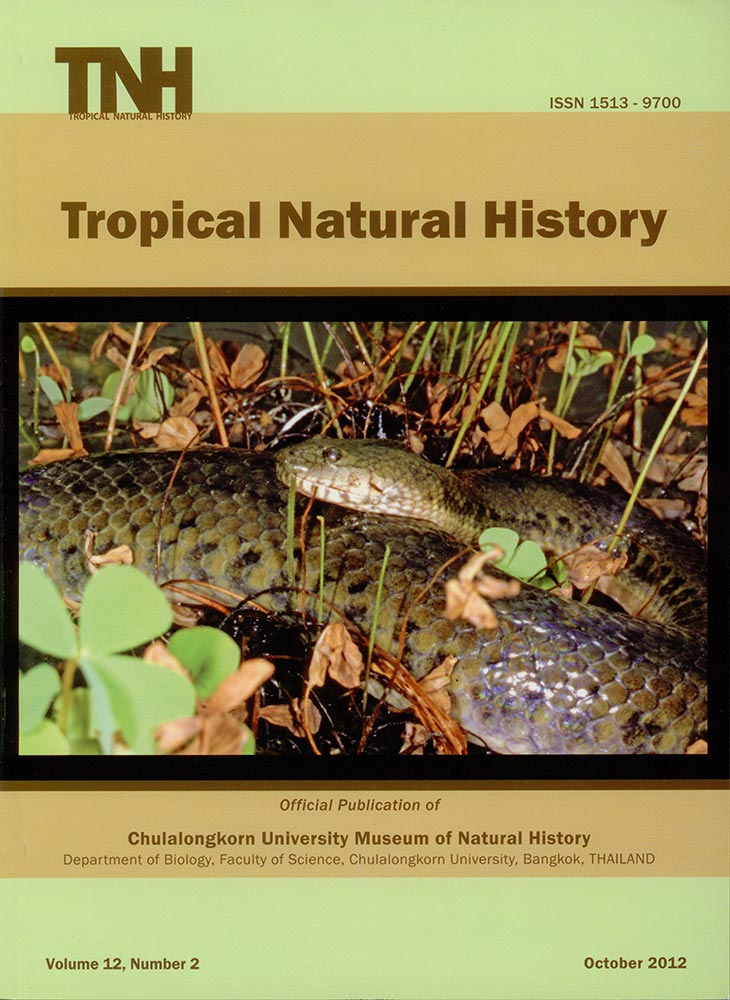Human-Macaque Conflict and Pest Behaviors of Long-Tailed Macaques (Macaca fascicularis) in Kuala Selangor Nature Park
DOI:
https://doi.org/10.58837/tnh.12.2.103050Keywords:
Human-macaque conflict, pest behavior, Macaca fascicularis, long-tailed macaque, Kuala Selangor Nature Park, Peninsular MalaysiaAbstract
Human-macaque conflicts and the pest behavior of long-tailed macaques (Macaca fascicularis) were studied near the Kuala Selangor Nature Park. The study location was based along the M. fascicularis trails starting from the ticket counter of a local train station to the main entrance of KSNP and pest behaviors were studied from February 2011 until July 2011 inclusive by intensive direct observations using the scanning method. In addition, human-macaque interactions in two nearby residential areas Taman Malawati and Taman Desiran were evaluated by questionnaire survey. Observations revealed six main categories of pest behaviors: littering (27%), damaging facilities (23%), breaking into human areas (18%), messing up garbage cans (18%), disturbing people (11%) and stealing (3%). The questionnaire survey revealed that most respondents had stayed there for 41-60 years (61%) and were well aware of the macaques and their disturbances. Their homes are often infiltrated by the macaques, which frequently steal items from their homes, especially food, and outside they often threw rubbish from the garbage cans, which caused an unpleasant sight around the housing area. In addition, the macaques often took their fruit (mainly mangoes and bananas) from the plantations. Overall, the pest behavior of the macaques was related to locating and obtaining of food. Therefore, government organizations, like the Wildlife Department and National Park (PERHILITAN), Kuala Selangor District Council (MDKS), and the nongovernment organizations, like the Malaysian Nature Society (MNS), need to create a buffer zone that can serve as a permanent habitat for M. fascicularis. This buffer zone must have some space that provides food for macaques every day in the morning, afternoon and evening, so as to reduce the pest behavior. In addition, MDKS needs to empty garbage cans daily and / or create garbage cans that cannot be opened by the macaques. In order to reduce pest behavior, organizations such as Universiti Putra Malaysia (UPM), PERHILITAN and MNS should initiate an awareness program for the local people nearby and also for the tourists.
Downloads
Published
How to Cite
Issue
Section
License
Chulalongkorn University. All rights reserved. No part of this publication may be reproduced, translated, stored in a retrieval system, or transmitted in any form or by any means, electronic, mechanical, photocopying, recording or otherwise, without prior written permission of the publisher












